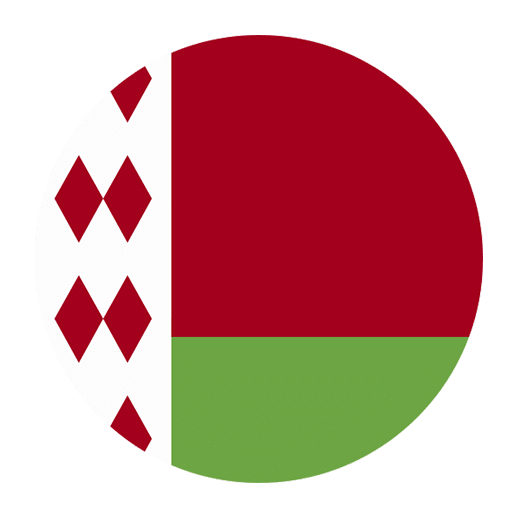Understanding a language extends beyond just grasping its grammar and vocabulary; it also involves appreciating its regional variations. Belarusian, the official language of Belarus, is no exception. Like many other languages, Belarusian exhibits distinct regional differences that can affect pronunciation, vocabulary, and even grammatical structures. For language learners and enthusiasts, understanding these regional differences can provide deeper insights into the language and culture.
Historical and Cultural Background
Belarusian is an East Slavic language closely related to Russian and Ukrainian. Its development has been influenced by the country’s history, geography, and socio-political context. Belarus is situated at the crossroads of Europe, bordered by Russia, Ukraine, Poland, Lithuania, and Latvia. This strategic location has exposed Belarus to various cultural and linguistic influences over the centuries.
The Belarusian language has two main standardized forms: the official standard (Narkamauka) and the classical orthography (Taraškievica). While the official standard is predominantly used in education, media, and government, the classical orthography is often favored by some cultural and political groups as a symbol of national identity.
Regional Dialects
Belarusian is traditionally divided into several regional dialects, each with its unique features. The main dialect groups are:
1. North-Eastern (Polesian)
2. North-Western (Vilnian)
3. South-Western (Polesian)
4. Central (Minsk and surrounding areas)
Each of these dialects has sub-dialects, contributing to the rich linguistic tapestry of Belarusian. Let’s explore these dialects in more detail.
North-Eastern Dialect
The North-Eastern dialect, also known as the Polesian dialect, is spoken in the northeastern part of Belarus, particularly in the Vitebsk region. This dialect exhibits several unique phonetic and lexical features.
Phonetic Characteristics:
– The pronunciation of the vowel “a” is often more open, resembling the sound “æ” in English.
– Consonant softening (palatalization) is less frequent compared to other dialects.
Lexical Features:
– The North-Eastern dialect has a considerable number of loanwords from Russian due to historical and geographical proximity.
– Some words differ significantly from their counterparts in other dialects. For example, the word for “bread” is “хлеб” (khleb) in Standard Belarusian, but in the North-Eastern dialect, it might be pronounced as “хляб” (khlyab).
North-Western Dialect
The North-Western dialect, or Vilnian dialect, is spoken in the northwestern regions of Belarus, particularly around the city of Vilnius (Vilnia) in Lithuania. This dialect is heavily influenced by Lithuanian and Polish due to historical ties.
Phonetic Characteristics:
– Pronunciation of the vowel “o” tends to be more rounded and pronounced, similar to the “aw” sound in “saw.”
– The consonant “r” is often pronounced with a slight trill, influenced by Polish and Lithuanian phonetics.
Lexical Features:
– The North-Western dialect incorporates many loanwords from Polish and Lithuanian. For instance, the word for “window” in Standard Belarusian is “акно” (akno), but in the North-Western dialect, it might be “вікно” (vikno) due to Polish influence.
– Unique regional vocabulary is also prevalent, making this dialect distinct from others.
South-Western Dialect
The South-Western dialect, also known as the Polesian dialect, is spoken in the southwestern regions of Belarus, particularly in the Brest and Gomel areas. This dialect is influenced by Ukrainian and Polish.
Phonetic Characteristics:
– The vowel “e” is often pronounced as “i,” similar to the Ukrainian pronunciation.
– Consonant clusters are sometimes simplified, making pronunciation easier and faster.
Lexical Features:
– The South-Western dialect includes numerous loanwords from Ukrainian and Polish. For example, the word for “cat” in Standard Belarusian is “кот” (kot), but in the South-Western dialect, it might be “кіт” (kit), reflecting Ukrainian influence.
– Certain expressions and idiomatic phrases are unique to this region, adding to its linguistic richness.
Central Dialect
The Central dialect is spoken in and around the capital city of Minsk. This dialect is considered the basis for Standard Belarusian, making it the most familiar to learners.
Phonetic Characteristics:
– The pronunciation is closest to Standard Belarusian, with clear and distinct vowel and consonant sounds.
– Softening of consonants (palatalization) is more pronounced compared to other dialects.
Lexical Features:
– The Central dialect has fewer regionalisms and loanwords compared to other dialects, adhering more closely to the standardized vocabulary.
– Due to its central location, this dialect often serves as a linguistic bridge between the other regional dialects.
Impact of Regional Differences on Language Learning
For language learners, understanding regional differences in Belarusian can be both challenging and rewarding. Here are some key considerations:
Pronunciation:
– Regional variations in pronunciation can make it difficult to understand speakers from different parts of Belarus. Familiarizing yourself with these variations can improve your listening and speaking skills.
Vocabulary:
– Regional dialects often have unique words and expressions. Learning these can enrich your vocabulary and help you communicate more effectively with native speakers from different regions.
Cultural Insights:
– Understanding regional dialects can provide valuable cultural insights. It can help you appreciate the diversity and history of Belarusian-speaking communities.
Language Resources:
– When studying Belarusian, it’s essential to use resources that expose you to different dialects. Listening to regional radio stations, watching local TV programs, and reading regional literature can be beneficial.
Practical Tips for Learners
Here are some practical tips for language learners to navigate the regional differences in Belarusian:
1. Exposure to Different Dialects:
– Make an effort to listen to speakers from different regions. This can be done through online videos, podcasts, or language exchange partners.
2. Use Regional Dictionaries:
– Some dictionaries focus on regional vocabulary and expressions. These can be valuable resources for expanding your knowledge.
3. Engage with Native Speakers:
– Engage in conversations with native speakers from various regions. This will help you become more attuned to different accents and dialectal features.
4. Study Regional Literature:
– Reading literature from different regions can expose you to unique vocabulary and expressions. It can also provide cultural context.
5. Be Patient and Open-Minded:
– Learning regional differences takes time and effort. Be patient with yourself and approach the process with an open mind.
Conclusion
Understanding regional differences in Belarusian is a fascinating and enriching aspect of language learning. It allows you to appreciate the diversity and cultural richness of the Belarusian-speaking world. By exploring the unique features of each dialect, you can deepen your connection to the language and its speakers. Whether you are a beginner or an advanced learner, embracing these regional variations will enhance your overall language proficiency and cultural awareness.
In summary, the regional differences in Belarusian reflect the country’s complex history and diverse cultural influences. From the North-Eastern dialect with its Russian influences to the North-Western dialect with its Polish and Lithuanian features, each region offers a unique linguistic experience. By understanding and embracing these differences, language learners can gain a deeper appreciation for Belarusian and its rich cultural heritage.

